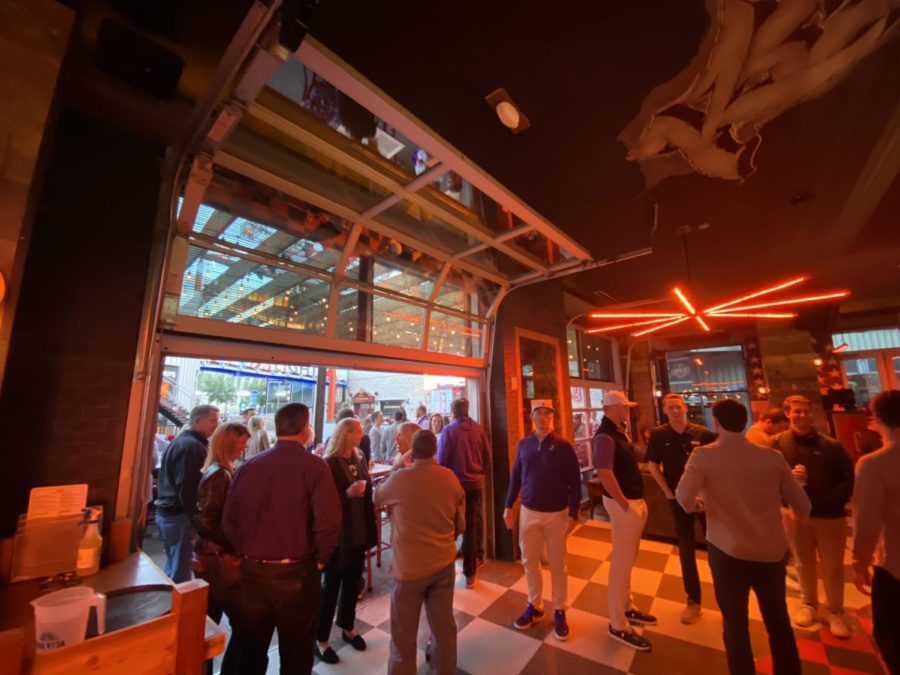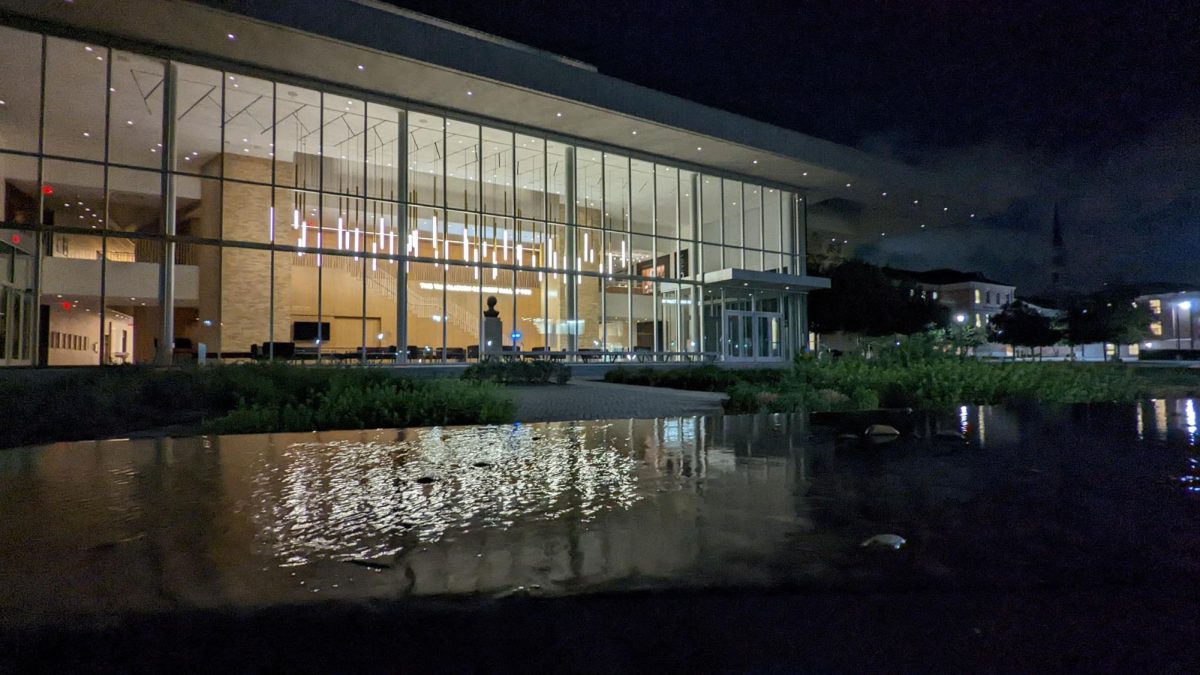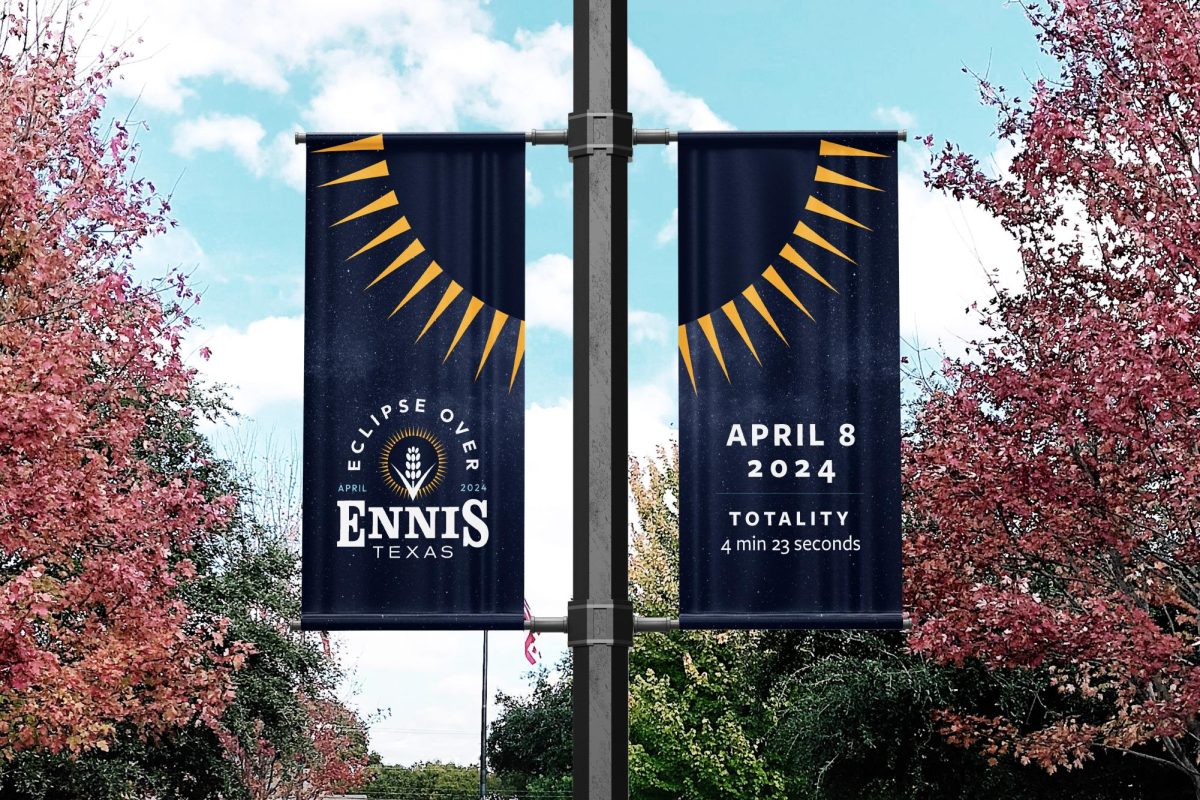This story was edited for accuracy on Feb. 18, 2011, based on feedback from one of the article’s sources. To see the changes, click here.
Contrary to popular belief, labyrinths are not used to get one lost and confused – rather, their purpose is to find answers and to meditate on religious issues. Two of the 109’s churches, St. Stephen Presbyterian Church and the University Christian Church, use labyrinths as methods of worship.
That fact is, according to Mark Scott of St. Stephen, the labyrinth is an extremely ancient form of meditation that has roots in paganism and is used as a form of worship in many historically aware churches. The design of labyrinths at St. Stephen and the University Church can both be traced back to the famous Notre Dame Chapel in Chartres, France.
Scott, St, Stephen’s minister of music and organist, is a fierce proponent of labyrinth. He says its ability to help sort out one’s life problems and commune with the God is a type of therapy and worship that would benefit everyone, Christian or not.
“It’s symbolic along the path of life and reminiscent of the times and trials in one’s life. It’s a visual reminder of the non-visual,” Scott said.
The winding paths of the labyrinth are meant to be walked quadrant by quadrant. Participants meditate on any issues they are experiencing in life and offer these up to God. After walking the main section or quadrants, the meditator or questioner stands or kneels at the center or main floret or rose of the labyrinth and then exits.
“It’s supposed to be a journey,” Scott said. “It makes you slow down and think. You’re supposed to take your time walking. It’s a very esoteric, ecumenical type of thing.”
St. Stephen has two labyrinths — one indoor, one outdoor.
The outdoor labyrinth is in the form of a garden path and is flanked by benches and a vista of downtown Fort Worth. Scott says it was funded by a church member and like the indoor labyrinth, was a gift given in memory of a loved one.
The indoor labyrinth is an 11-circuit Chartres-style labyrinth actually painted on an enormous piece of canvas fabric and is rolled out on various holiday occasions and when led in a labyrinth worship facilitation by church member and trained labyrinth facilitator and clinical psychologist, Carol Stalcup.
Stalcup visited Grace Cathedral in San Francisco to be trained by Lauren Artress, the woman charged with reviving the use of the labyrinth as a spiritual tool in the early ‘90s. According to the training Stalcup received, there appear to be three stages during one’s walking of the labyrinth: the releasing of cares and distractions, the receiving of enlightenment or encouragement, and returning to the world in union with God.
Stalcup says facilitators are trained to deal with people’s differing reactions to the labyrinth and also sometimes encourage people to journal about their experiences to better understand them.
“Some people are deeply moved and there are tears, they have a profound experience and come out lighter, happy, and thoughtful. For others, it’s simply another form of prayer and not as dramatic. It’s different for everyone and the labyrinth is not meant for everyone.”
Constantly making turns and twists in connection with the direction of the labyrinth is something that Stalcup says is currently being scientifically tested to determine whether it helps tap into the left and right hemispheres of the brain. She says it could be a scientifically proven neurological calming process.
Stalcup said she wishes all could experience the benefits of walking the labyrinth. She says she is such a devoted follower of labyrinth worship because each experience is different and unique, and she loves the diversity.
“I have walked with different communities of friends and with groups of strangers, I have walked solo walks and lingered a long time. I’ve danced the path, sung, prayed, created body prayers, listened to music, smiled, laughed, been surprised by tears, felt deep awe, felt lonely, felt reassured, solved a problem,” Stalcup said.
It is her favorite form of worship because of the various forms of spiritual experiences one can have.
“I have experienced what I believe to be profound spiritual experiences, but am always caught by surprise,” she said. “Somehow, though a walk may not move me to tears or bring me to dance, I always feel as if the time I spent on the labyrinth was a special moment outside of linear time, outside of my usual way of being.”
Stalcup said being a regular walker of the labyrinth has “directly impacted my discernment of God’s presence in my life, in others, in the world. Those discernments stay with me, sustaining, encouraging, nourishing and leading me to more gratitude, wonder and connection with all of creation.”
For those with difficulty walking or without access to a full-size labyrinth, there are finger or stylus labyrinths, which one can follow with a finger or pen-like utensil and employ the same meditation/worship philosophy.
The UCC’s website for its labyrinth ministry describes using the labyrinth as a way “to enhance spiritual growth, experience transformation, enter into an intimate and inspiring relationship with God and one another, and share the path in the spirit of love, reverence and respect for each one’s personal journey.”
UCC’s labyrinth is also a hand-painted, roll-out canvas. They were bought from the same company and are the same traditional Chartres design.
The labyrinth of Chartres is famous for its location, age and size. It was inlaid in the Chartres Cathedral floor in 1205 and contains only one pathway, which is 954 feet in length. The center of the labyrinth purportedly once had a metal plate with figures of Theseus, Ariadne, and the Minotaur, figures from the classical Greek mythology of the labyrinth on Minos.
The Chartres-style labyrinth employed by both churches has a circular pattern with a rose or floret design in the center. According to Stalcup, the rose symbolically can stand for human love, enlightenment, Christ, and God’s love for the world. The rose traditionally has six petals which represent the six days of creation; Stalcup encourages her “walkers” to step into each petal and as they leave the central rose, to imagine themselves returning to the world in union with God.
While many churches utilize the practice of worship with the help of labyrinths, the practice is actually an ancient one the church may have borrowed from pagan or nature-based religions.
“Christians were kind of the late kids to the party,” Scott says with a laugh. “Even down to the holidays, Christmas was made Christmas because of the winter solstice. Easter coincides with the spring equinox.”
Above all, Scott says, he wishes all to know St. Stephen’s outdoor labyrinth is intended for the entire community, religious or not.
“Sure, it’s a labyrinth with a Christian take, but anyone can come use it. With the benches all around, the beautiful garden, the glorious view — we want anyone and everyone to be able to use and enjoy it.”




